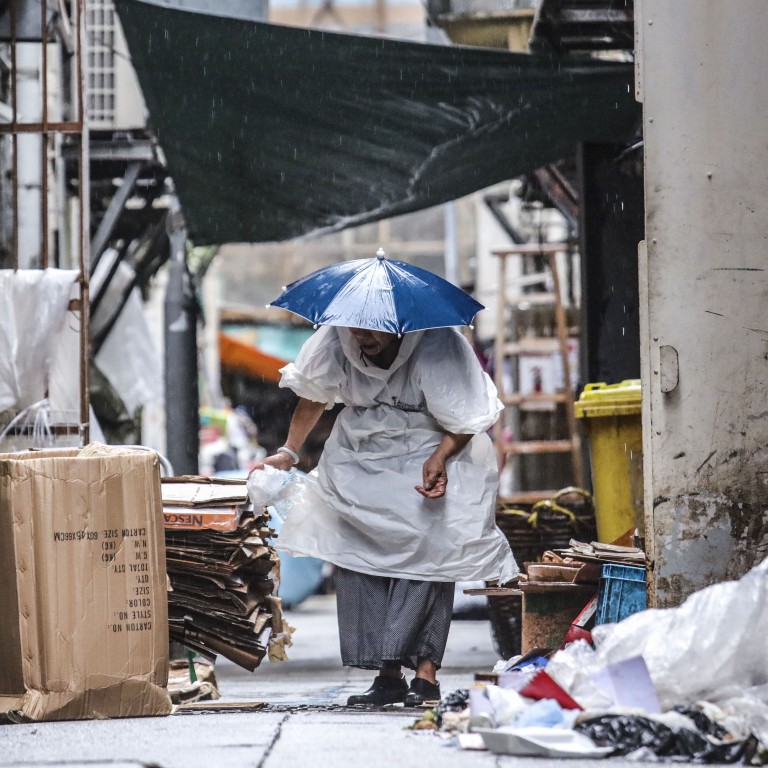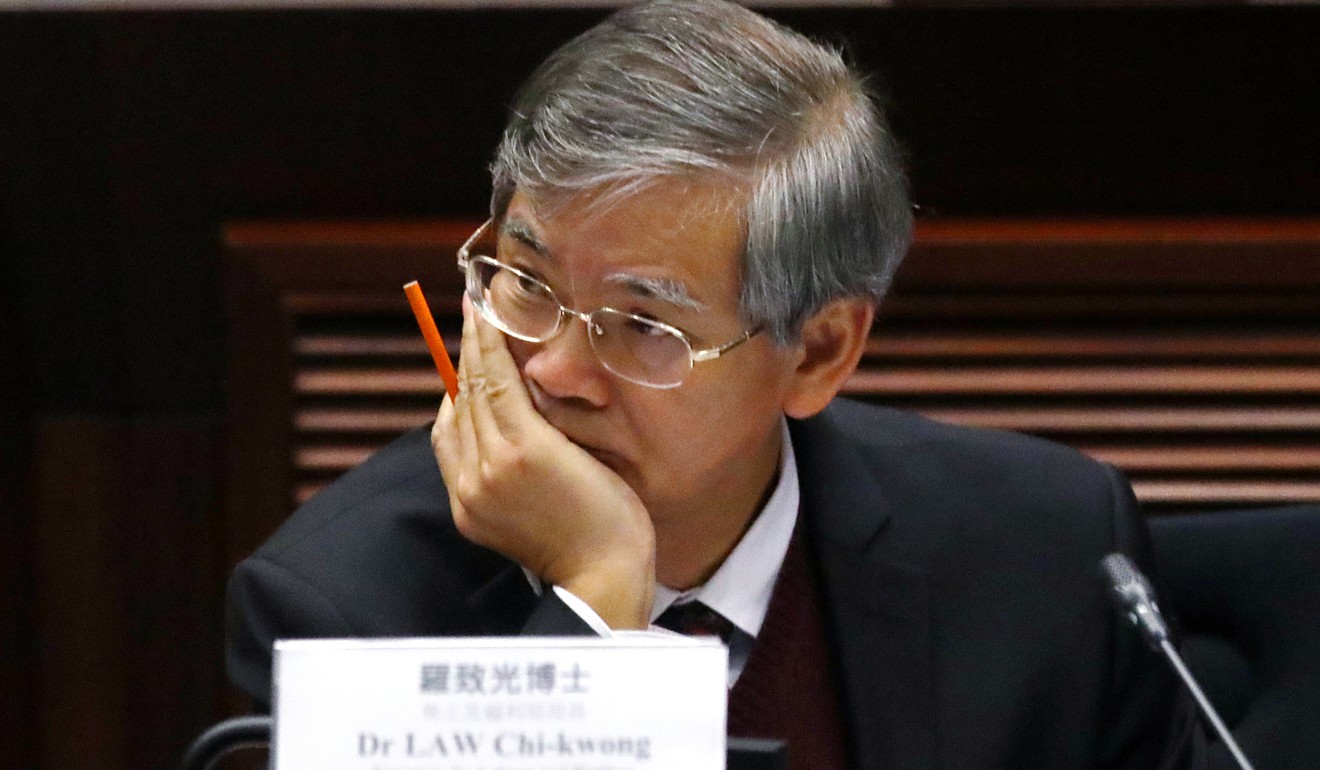
Poverty figures in Hong Kong not as high as official report shows, welfare chief Law Chi-kwong says, as allowances not taken into account
- Secretary for Labour and Welfare Law Chi-kwong argues the number of people living below the poverty line is about half a million less than reported
- He says it will be hard to eliminate poverty completely unless the government charges high taxes, which is unlikely to happen
Measures to tackle poverty in Hong Kong have been effective, the city’s welfare chief says, contradicting new official figures that showed the number of people living below the poverty line had hit a 10-year high.
Secretary for Labour and Welfare Law Chi-kwong on Saturday argued the number should be 910,000 once the effects of government policies, such as cash allowances, were taken into account, half a million lower than reported.

“Theoretically, the poverty situation won’t get worse while there are efforts to alleviate it,” Law said on a radio programme.
“The 1.4 million people is not real in a sense because it is only a hypothetical figure, as if the government has not done anything at all.”
Law said a more practical figure to look at would be 910,000, which took government intervention into account. That figure was down 40,000, or 4 per cent, from 2017, and the fall showed official measures were effective, he said.
The poverty line is set at 50 per cent of the median monthly household income before taxation and government intervention, including social welfare payments, such as allowances for the elderly and low-income families.
Currently, that means a single person with a monthly income of HK$4,000 or a two-person household earning HK$10,000. The threshold for a three-person household is HK$16,500 a month.
Still, Law admitted the poverty population was big and the government would need to further reduce the figure.
“The inequality of people’s income, or a disparity between the rich and poor, could be a factor to pose instability in society. Of course, we can’t blame the recent social events on the wealth gap. But it affects public opinion and livelihood,” he said.
Law said charging higher taxes such as in some northern European countries, which have a rate of 59 per cent or more, could help to significantly narrow the wealth gap. But he believed the government would not follow suit.
Hong Kong’s homeless and NGOs that help them hit hard by protest crisis
Meeting reporters at a separate event, Chief Secretary Matthew Cheung Kin-chung, chairman of the Commission on Poverty, pointed out limitations in the latest report. He said the poverty line only took household income into account, but not assets. So with an ageing population, the reported figures looked serious.
“For many elderly people who don’t have a job or engage in economic activity, their income will lessen and therefore fall into this pool, but they may not have economic needs,” he said.
Meanwhile, Law predicted an increase in the rolling three-month jobless rate for September to November. The figure for the three months to October stood at 3.1 per cent.
“According to some analysts in the community, the number is in the range of around 4 to 5 per cent. We sincerely hope it won’t be that high. But it’s all up to the circumstances.”

